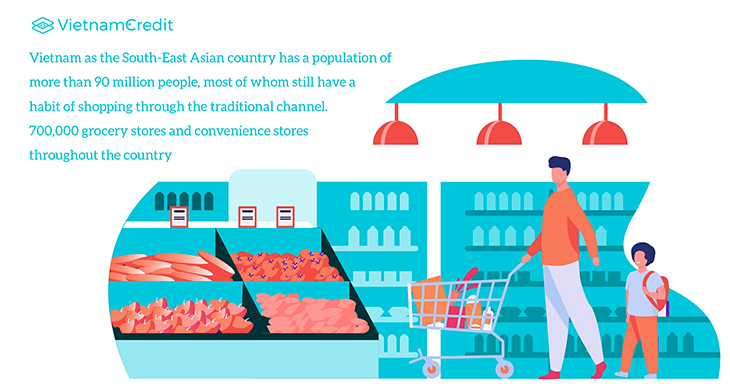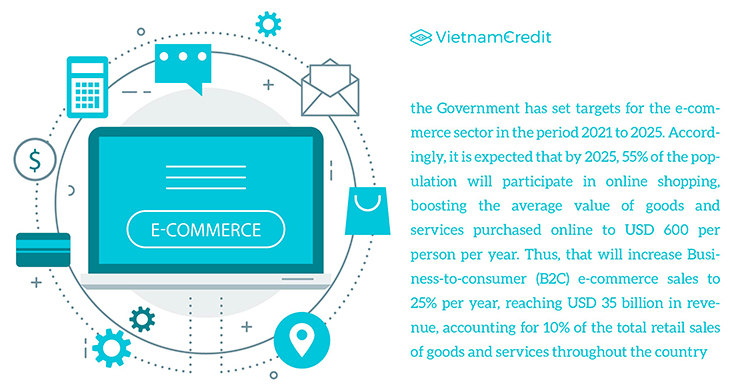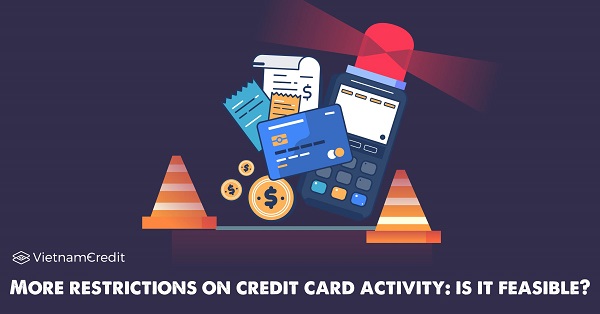Viet Nam’s e-commerce market is forecasted to increase 20% in the last quarter to reach USD 12 billion by the end of this year, given that the COVID-19 pandemic can be brought under control.
It is believed that there are many opportunities for the growth of e-commerce in Vietnam as the South-East Asian country has a population of more than 90 million people, most of whom still have a habit of shopping through the traditional channel. 700,000 grocery stores and convenience stores throughout the country is an impressive figure for e-commerce platforms, indicating huge profits if these stores could change their operating model to online sales.

Vietnam E-Commerce Association (VECOM) predicted that the growth rate of e-commerce wouldcontinue to remain at 30% in 2020, exceeding USD 15 billion in revenue. However, the Covid-19 pandemic has dealt a blow to this agenda. The Covid-19 outbreaks hit small and medium-sized businesses hard, posing great challenges for businesses in adapting to the new difficult situation.
The spread of Covid-19 has changed the consumers’ shopping habits in a way that customers prefer to shop online, and also pay more attention to products’ origin as well as food hygiene and food safety. While the pandemic was at a peak period in Vietnam, from February to April, e-commerce became the only sales channel for a number of goods and services. Therefore, it can be said that the outbreak of the Covid-19, besides having undeniable adverse effects on the whole economy in general, also leaves some chances for businesses to break through, especially to shift from the traditional stores to the more up-to-date online shopping channel.
VECOM has surveyed thousands of e-commerce businesses and concluded that businesses still grew 14% over the same period in 2019 during the peak of the pandemic in Vietnam. This is a very impressive number given that many businesses in other sectors have to close, dissolve, or go bankrupt under the impacts of the disease.
However, data is analyzed in more detail, it can be seen that the effects of the Covid-19 epidemic on businesses vary. Businesses that are not well-prepared to adapt to the new situation and cope with market fluctuations suffer severely from the pandemic, while the remaining few could take advantage of this opportunity to increase the customer base and boost sales.
57% of the surveyed e-commerce businesses reported that their revenue growth from February to April was below 30% compared to the same last year; some even saw negative growth. Meanwhile, 24% of the surveyed businesses experienced an increase in revenue, up to 50%. The growth rate of revenue in the first 6 months of 2020 is estimated to decrease by about 6% compared to the same period the previous year although the number of transactions increases by 25%. This is explained by that most e-commerce transactions in the Covid-19 period are of low value.
The Ministry of Industry and Trade forecasts that if the disease is keeping under control as it is now, revenue in the e-commerce sector can rise 20% in the last three months of 2020 to reach USD 12 billion. In a worse scenario, if there is another outbreak of the pandemic, impacting production and consumption, supply, and operations of transportation, growth may increase only 13% with theestimated market value of $11 billion.
However, Viet Nam is, still, one of the most dynamic e-commerce markets in the region with an average growth rate of more than 30% per year in the last five years, ranking third in Southeast Asia.

In May, the Government has set targets for the e-commerce sector in the period 2021 to 2025. Accordingly, it is expected that by 2025, 55% of the population will participate in online shopping, boosting the average value of goods and services purchased online to USD 600 per person per year. Thus, that will increase Business-to-consumer (B2C) e-commerce sales to 25% per year, reachingUSD 35 billion in revenue, accounting for 10% of the total retail sales of goods and services throughout the country. At the same time, the Government also hopes to narrow the gap in e-commerce development between Hanoi, Ho Chi Minh City and other localities.
Another target is to promote cashless payments in e-commerce. It is expected that cashless paymentswould make up 50% of total transactions and about 70% of transactions on e-commerce platforms would have electronic invoices.
The Ministry of Industry and Trade is determined to achieve this goal, starting by building mechanisms and policies to promote digital transformation and enhance management capacity. These efforts are aimed to bring convenience for customers and increase their confidence in shopping online.
In the first nine months of this year, the authority handled more than 2,200 cases of e-commerce violations and other acts of smuggling, purchasing goods of unknown origin, infringing intellectual property rights, and counterfeiting on e-commerce platforms. The fines for the violations totaled tomore than VND 16 billion (approximately USD 690,000). In addition, since the beginning of the year, the Ministry has asked e-commerce platforms to review and remove nearly 223,600 shops and more than 1 million products, handling more than 30,000 violating shops with nearly 48,000 products.
Prepared by VietnamCredit

























































